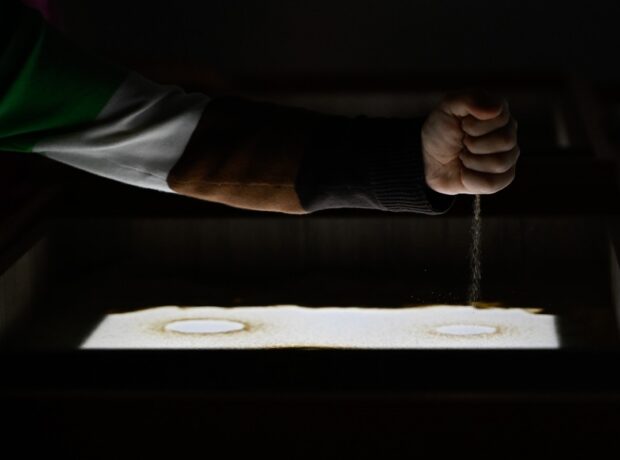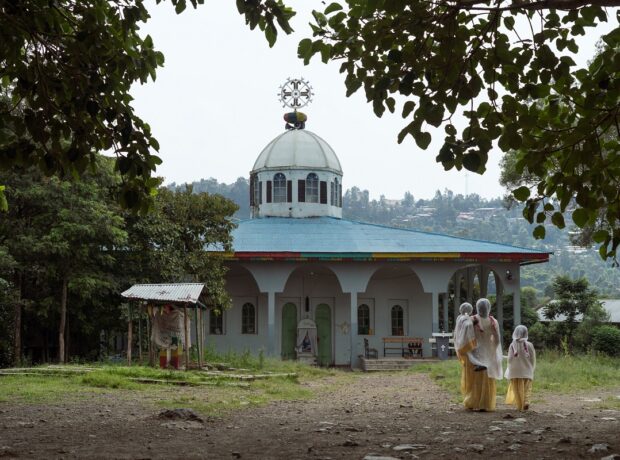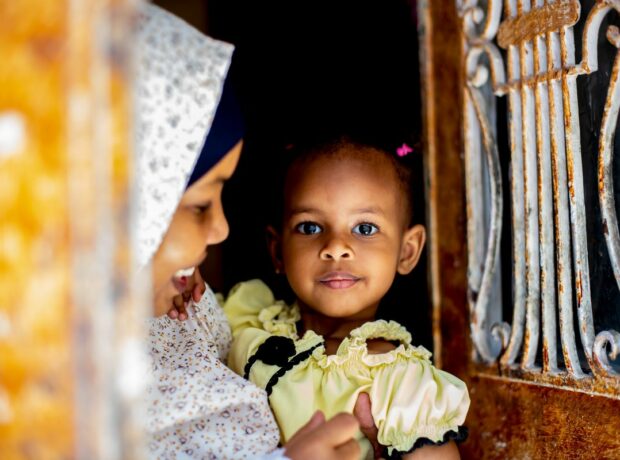In Somaliland, conflict and climate change are causing scores to flee home as “internally displaced peoples” (IDPs). But in a self-proclaimed independent country unrecognised by foreign powers, the distinction between “IDP” and “refugee” becomes less clear. The Sheikh Omar settlement, outside the capital Hargeisa, is one of many housing a growing number of IDPs fleeing to urban centres and facing unique challenges.
Hafsa Deeq Saed, 35, is crouched in front of a pot of boiling water, surrounded by her seven children, who have already been complaining of hunger for hours. Unable to afford food today, Saed hopes the bubbling water will distract them until they forget about their hunger pangs and fall asleep.
“I am lucky if I can feed them once a day,” Saed says, wiping sweat from her forehead while fanning the flames below the pot with a rolled-up newspaper. Saed and her children, who fled armed conflict and drought in south-central Somalia about a year ago, are among hundreds of families who have found refuge in this urban settlement on the outskirts of Hargeisa, the capital of Somaliland – the internationally unrecognized nation-state that broke away from Somalia in 1991.
Most families in this sprawling urban settlement are escaping recurrent droughts that – along with armed conflict – have devastated pastoralists across the Horn of Africa.
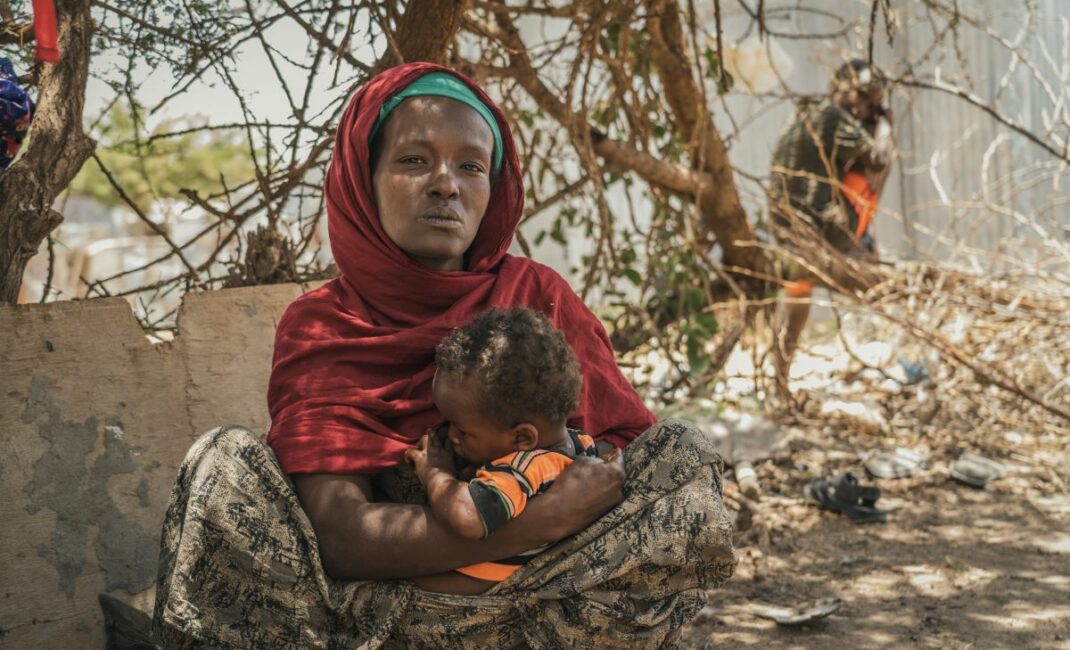
Hafsa Deeq Saed feeds her baby in the shade of a tree
The region faced its longest and most severe drought on record in 2022 after five consecutive below-average rainy seasons, triggering 2.1 million people across Somalia, Ethiopia and Kenya to flee their homes, according to the Internal Displacement Monitoring Centre (IDMC). Somalia, of which the international community considers Somaliland to be a part, accounted for 1.1 million of those, the highest figure recorded globally since data on drought displacement became available in 2017.
The majority of the world’s internally displaced peoples (IDPs) and refugees migrate into cities and towns where they face a set of unique challenges, including limited access to aid and education, along with food insecurity. Areas associated with displaced peoples are quickly evolving from humanitarian camps to densely populated informal settlements, like the community where Saed and her children now live.
According to the World Bank, if measures to mitigate or adapt to climate change are not taken, up to 216 million people could be internally displaced by 2050, driving 69% of the world population into urban areas, mostly in Asia and sub-Saharan Africa.
Somalia is one of the fastest urbanizing countries in the world, which is directly due to the loss of livelihoods because of climate change. Each year, thousands of displaced people find refuge in Hargeisa, showcasing a growing phenomenon of climate-induced displacement driving scores into urban centers.
Those displaced from natural disasters, whether coming from within Somaliland, south-central Somalia or Ethiopia, are now trapped on the margins of the city — barely scraping by a living through casual labor or reduced to begging.
No water, no food, no school
Over the years, Hargeisa has become host to various populations that have been displaced by conflict, insecurity, and drought, along with those who migrate to the city for economic reasons. The majority of these individuals join communities residing in government-recognized settlements, while others mingle with the city population.
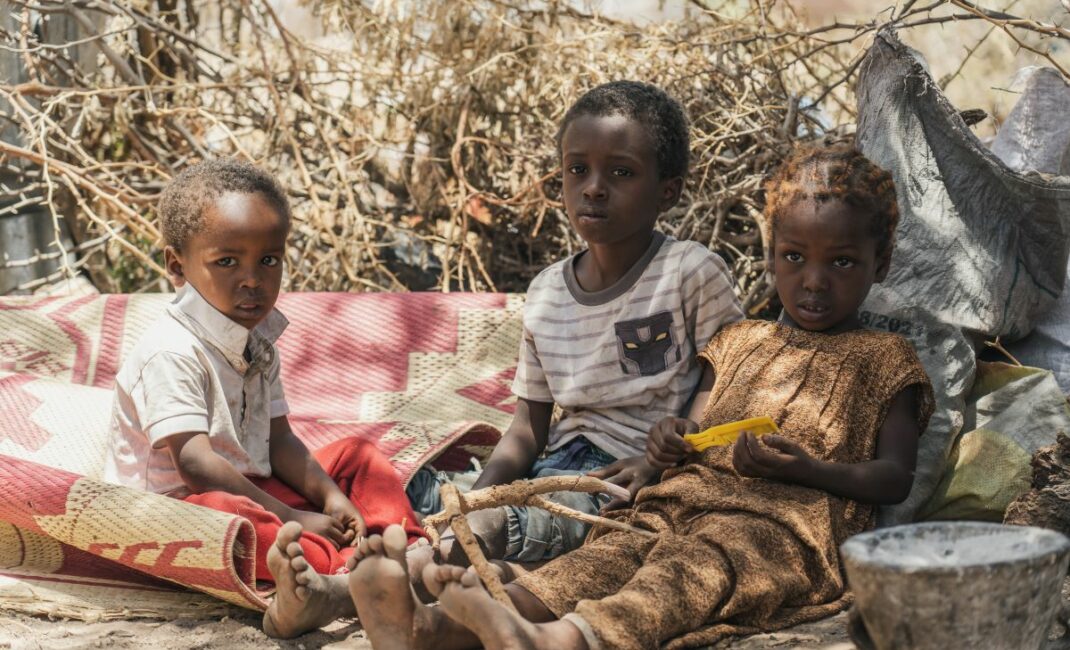
Three of Hafsa Deeq Saed’s children
Like millions of others, Saed and her family have been devastated by recurrent droughts. They once owned dozens of sheep and cattle, but all of the animals died a few years ago. She and her husband tried farming, but the 2022 drought destroyed their crops too. “Life became very hard,” says Saed, who is from a village outside the port city of Kismayo. “We felt constant hunger.”
When violence from the years-long conflict between the Islamic insurgency group Al-Shabaab and the Somali government arrived at her doorstep, she decided it was finally time to leave.
“Someone threw a grenade at our neighbor’s house,” Saed recounts. “All of them were killed. It was hunger and war that forced us to run away all this distance.”
Saed and her family fled first to the Somali region of Ethiopia and then made their way to Hargeisa. “Some of my children could not even walk,” Saed says. “They were too hungry and malnourished. I was scared they would die.” Since 1991, when Somaliland declared its independence, the territory has enjoyed relative peace and stability as war has plagued south-central Somalia.
The urban settlement to which Saed fled, on the outskirts of Hargeisa, is called Sheikh Omar. It is one of several urban settlements established for displaced peoples in Hargeisa. According to Mohammed Ali, a program manager at HAVOYOCO (Horn of Africa Voluntary Youth Committee) – a local organization in Hargeisa providing social protection services to the community – the area of Sheikh Omar was established between 2008 and 2010 for internally displaced peoples who returned after fleeing the region into Ethiopia during the Somali Civil War in the 1980s and early 1990s.

One of Saed’s children sitting outside their makeshift home in Sheikh Omar
Upon their return to the newly declared state of Somaliland, they settled on government land in Hargeisa. But the government relocated about 200 of these families to Sheikh Omar, purchasing the land from the family of an esteemed religious leader. These IDPs now own the lands to where they were relocated, according to Ali.
Over the last few years, however, hundreds of families who have lost their livelihoods and been displaced by droughts and conflicts have also crowded into the settlement, living in makeshift homes made from tin sheets. Like the others who have more recently arrived here, Saed must pay rent to the landowner, about $40 per month. Having lost everything in Somalia, this has been a struggle for her and her family.
“We are living entirely off of charity now,” Saed says. “Sometimes our neighbors help us. But a lot of times we are just hungry. Right now, we only have safety from war, but we’re not safe from malnutrition or starvation.”
According to Kerrie Holloway, a research fellow at the independent, global affairs think tank ODI (Overseas Development Institute) who carried out extensive research on IDPs in Somalia’s capital, Mogadishu, urban IDPs and refugees often face hurdles accessing humanitarian aid; it is one of the biggest differences between their experiences in the urban landscape and those living in organized refugee camps.
“When you have a refugee camp that has been set up and run by the United Nations, for example, organizations go there to provide assistance and they know [the refugees] are there,” Holloway explains. “But in an urban setting you don’t really have that consistent access to aid.”
Despite the desperation expressed by newly arrived IDPs and refugees in Sheikh Omar, the settlement rarely receives food aid, says Ali, of HAVOYOCO. “It’s not continuous,” he says. “It comes very erratically.”
The World Food Programme (WFP) provides food deliveries, but sometimes months go by without aid entering the settlement. However, other services provided by local organizations, such as nutrient assistance for lactating mothers, are more consistent. Some residents receive cash transfers.
“But the most pressing challenges for Sheikh Omar are first water, second water, and third water,” Ali emphasizes. “It’s a constant struggle in the community.”
Residents here — many of whom are entirely reliant on charity — must purchase their water from outside. For a population struggling to afford the very basics of city life, this extra cost can mean a gruelling daily choice between water and food.
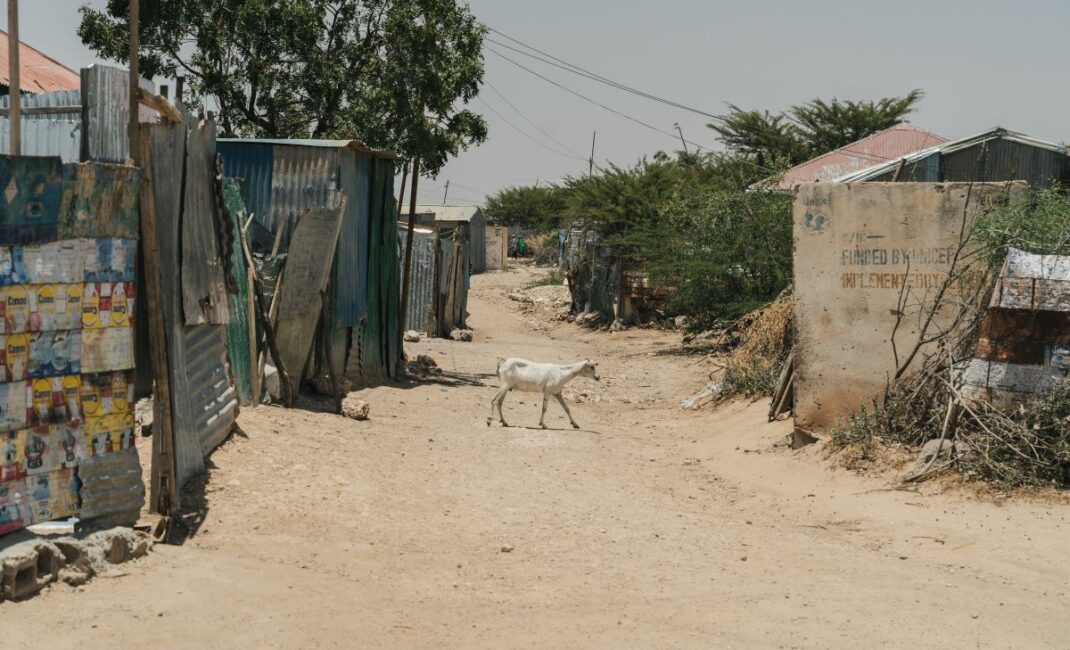
A view of Sheikh Omar
Accessing schools for their children is also a major obstacle for families in these urban settlements on Hargeisa’s outskirts. And according to Holloway of ODI, lack of school access is a dilemma affecting the displaced in urban centers throughout the world.
“In Mogadishu there was an issue around making sure there were enough schools for the children displaced in the city,” she tells me. “A lot of IDPs couldn’t send their children to school and that was partly because there weren’t enough school places […] Others simply can’t afford the fees, books, and uniforms.”
In Sheikh Omar, there is one primary school that was constructed by a local organization; however, the classes are very few, Ali says. Saed has not been able to send any of her children to school.
“I am worried each day about ensuring they don’t starve and have some drinking water,” Saed tells me. “So how can I think about education right now?”
“I fear a lot for the future of my children,” she continues. “I am always crying in my heart, but I try not to cry in front of them.”
“Nothing but worries”
Climate change is increasing global migration. “If you look at migration in Somalia,” says Holloway, “it ebbs and flows, depending on both the climate change issue and the conflict and where it is heating up at any one point in time and place.”
Over the last decade, net migration figures have remained about the same — although there has been an increase of displaced people each year for the past several decades, but “if you ask people why they are moving you will see a decrease in conflict-related migration and an increase in climate change-related migration. So, it is not that the numbers are changing so much in Somalia as much as the driver of displacement is changing,” she adds.
Holloway notes that displacement from natural disasters and extreme weather events caused by climate change also carry with them a permanence not seen as much in conflict-related displacements.
“The issue with climate change is that it’s increasingly likely that droughts are going to be more common and land is going to become less usable,” Holloway says. “Unlike conflict, which you might hope will someday be resolved, the issue of climate change doesn’t seem like it can be resolved any time soon. So that’s something that is going to make displacement even more protracted.”
Abdillahi Ahmad, 40, has no ability to return to his home in Faraweyne, a drought-stricken region of Somaliland near the border with Ethiopia. In 2022, Ahmad watched in horror as all of his sheep and cattle starved to death, one by one, in a period of just one month.
“We used to feed them sorghum and maize that we planted, but when there was no rain, we had no food to feed them anymore,” Ahmad says, squatting outside his container home in Sheikh Omar as his six children, aged 8 months to 14 years, crowd around him.
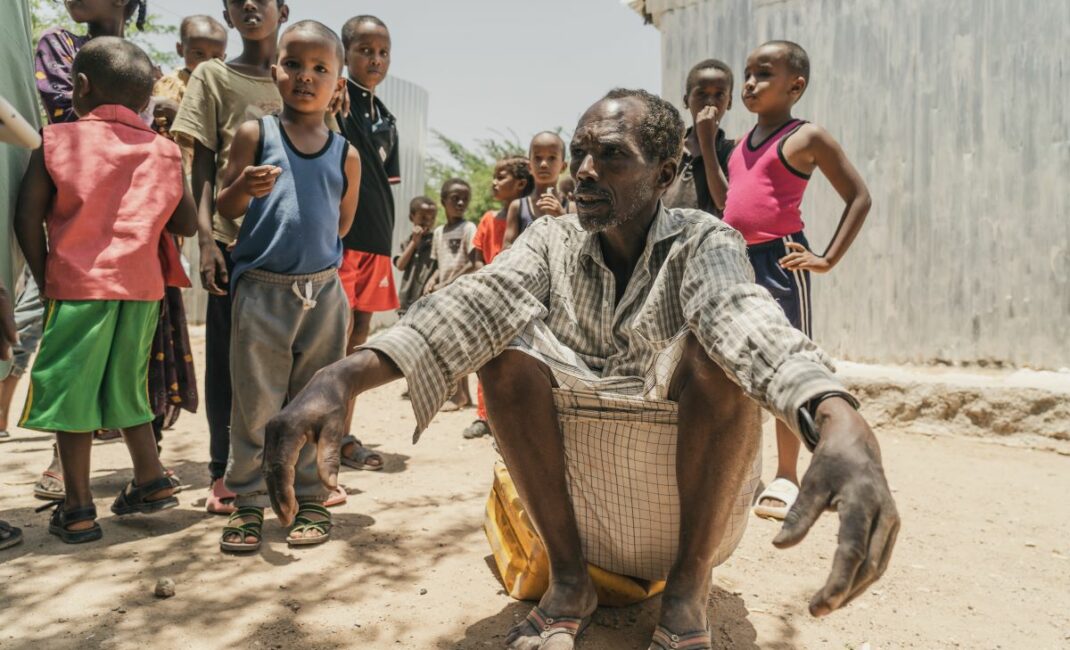
Abdillahi Ahmad, surrounded by children
Ahmad and his family migrated to Hargeisa and a concerned citizen provided them a house in Sheikh Omar. Ahmad now finds sporadic work in construction to support his family, but often he is left depending on charity.
“I used to get some days of work, but now I haven’t worked for a long time,” Ahmad says, dragging his palms across his face. “I can’t control anything in our lives now. Sometimes neighbors will help me buy food. I go out each day to try and find something for my family, but I mostly return with empty hands.”
“In the countryside, I had all my animals and nothing to worry about, but in the city there is nothing but worries,” Ahmad adds.
Read more: “It dried up before our eyes”: How the loss of Jordan’s marshes has fractured communities
According to Holloway, casual labor opportunities offered in cities can help offset the shortcomings of accessing humanitarian aid. But displaced peoples working in the informal sector in Hargeisa also brings a myriad of dangers, exacerbating the unpredictability of their lives in the city.
“The uncertainty of people in these informal settlements is often exacerbated by an increased competitive market for casual labor,” explains Abdirahman Edle, a researcher based at the University of Nairobi and University of Copenhagen. “A lot of it is unregulated so women and vulnerable people can be easily subjected to manipulation. Many times they are underpaid or other times their payment is denied to them. There’s no proper mechanisms in place for them to air their grievances — and this has made their lives very difficult.”
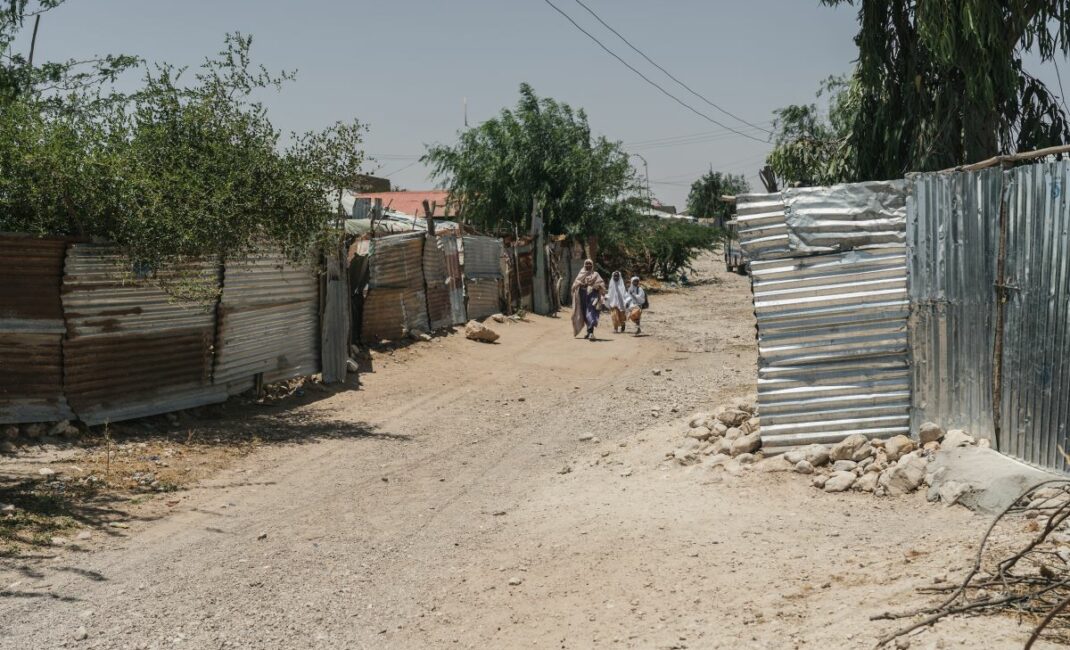
A view of Sheikh Omar
Edle notes that women are particularly vulnerable to abuse and exploitation, with incidents of rape and violence against women being common in the informal settlements of displaced peoples.
Those displaced from south-central Somalia, whether due to conflict or natural disasters, who seek refuge in Hargeisa also contend with another challenge: while the international community, which does not recognize Somaliland’s sovereignty, define those displaced from south-central Somalia as IDPs, the Somaliland state considers them refugees.
“Throughout Somaliland, the definition of an IDP and refugee is quite contested,” Edle explains. With the Somaliland government defining any person originating from southern or central Somalia as refugees and those displaced within the territory of Somaliland as IDPs, the state classifications of these populations contradict international humanitarian agencies who consider all displaced Somalis in Hargeisa as IDPs.
“This has been quite a challenge for the international and United Nations organizations,” Edle says. “The fragmentation of this population into two groups and the divergence of definitions has led to issues in addressing the plights of these groups, despite both being very much in need of assistance.”
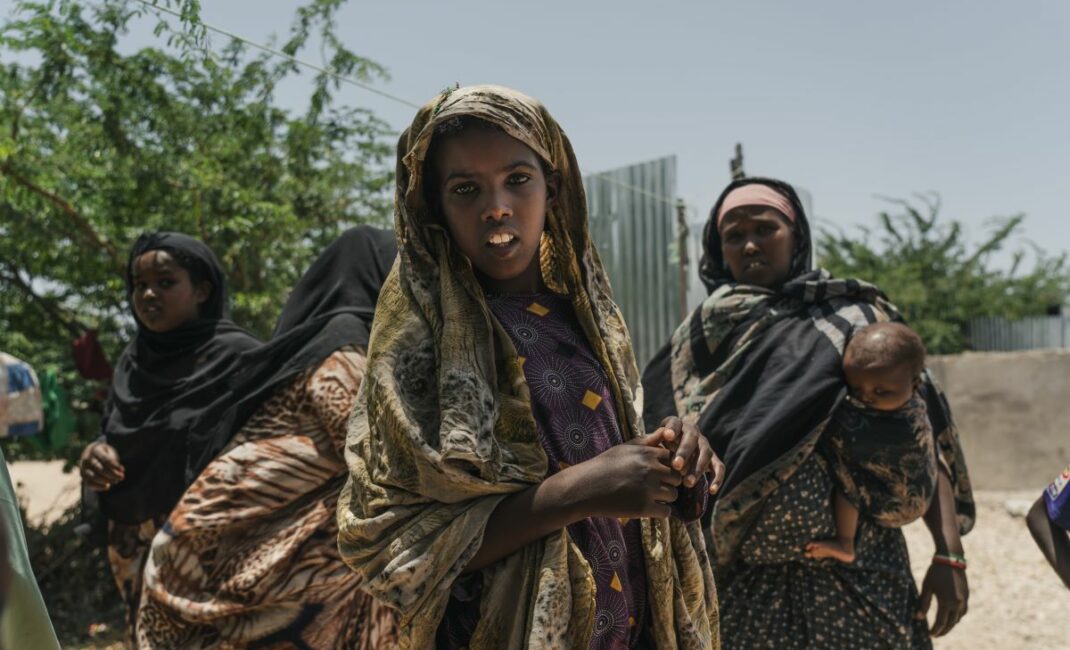
One of Abdillahi Ahmad’s daughters
The politics of Somaliland’s sovereignty has also affected the issuance of international humanitarian aid assistance. “All humanitarian aid that comes from the international community or the United Nations must pass through Mogadishu,” Edle says. “The Somaliland government has insisted that they receive separate aid and assistance that does not come through Somalia. So, they politicize it and they have in the past rejected some of this support when it comes through Mogadishu, so it doesn’t get to the people who are suffering.”
For families in Sheikh Omar, this humanitarian aid is badly needed.
Ahmad’s wife, 30-year-old Sahra Abdi Hassan, still dreams of their old lives in the countryside — before drought turned their world upside down. “We used to have our own animals,” she laments. “We would milk them and sell them. We lived completely independently. Now, sometimes my husband doesn’t get anything for the children when there’s no construction that day, and I don’t have anything to cook for my children.”
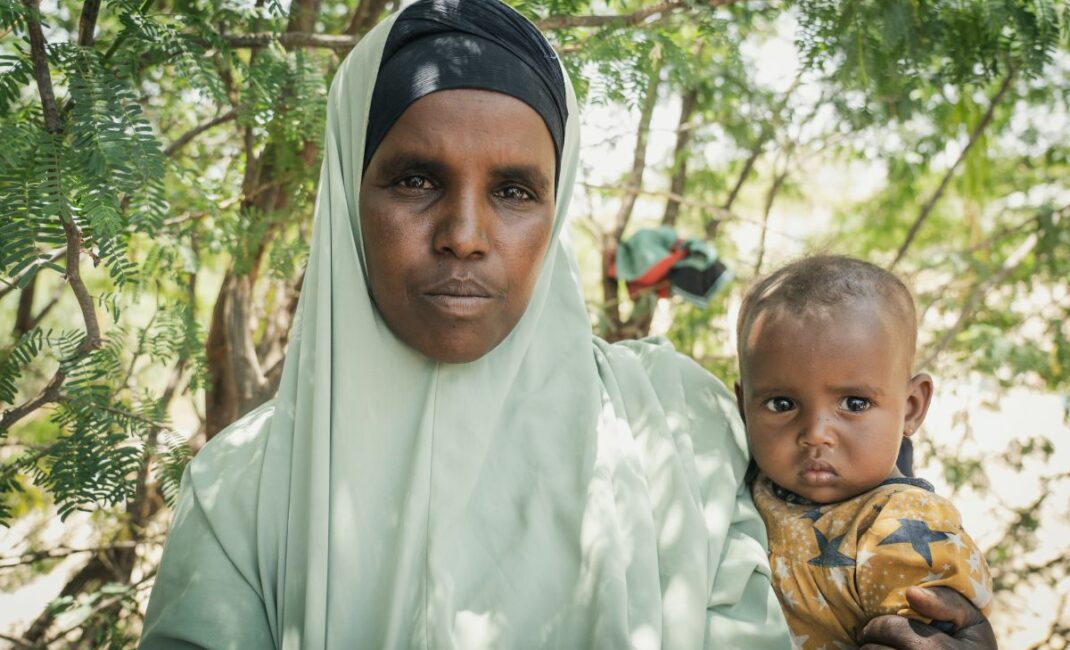
Sahra Abdi Hassan with her youngest child
“We used to be rich compared to how we are now,” she continues. “We have nothing in town. I never imagined something like this happening. We are starting from scratch and trying to figure out how to survive in this city.”
“Close to death”
Fardowsa Muhammad’s newborn was only alive for five months before he died from hunger. The infant was one of the tens of thousands of people who died from the 2022 drought — half of whom were thought to be children under five.
“I was so hungry and couldn’t produce breast milk, so I couldn’t feed him,” 32-year-old Muhammad says, tears streaming down her face. She is from a village outside Jijiga, the capital city of the Somali region of Ethiopia. “His eyes turned yellow. I had no money for medicine. I just had to watch him die without any way to help him.”
Muhammad’s story is the same as that of many of the families living in Sheikh Omar. Her family’s sheep, goats, and cattle died from hunger and the family was left impoverished with no means of caring for themselves. Along with losing their animals to the drought, conflict between warring Somali clans displaced her family from their village lands.
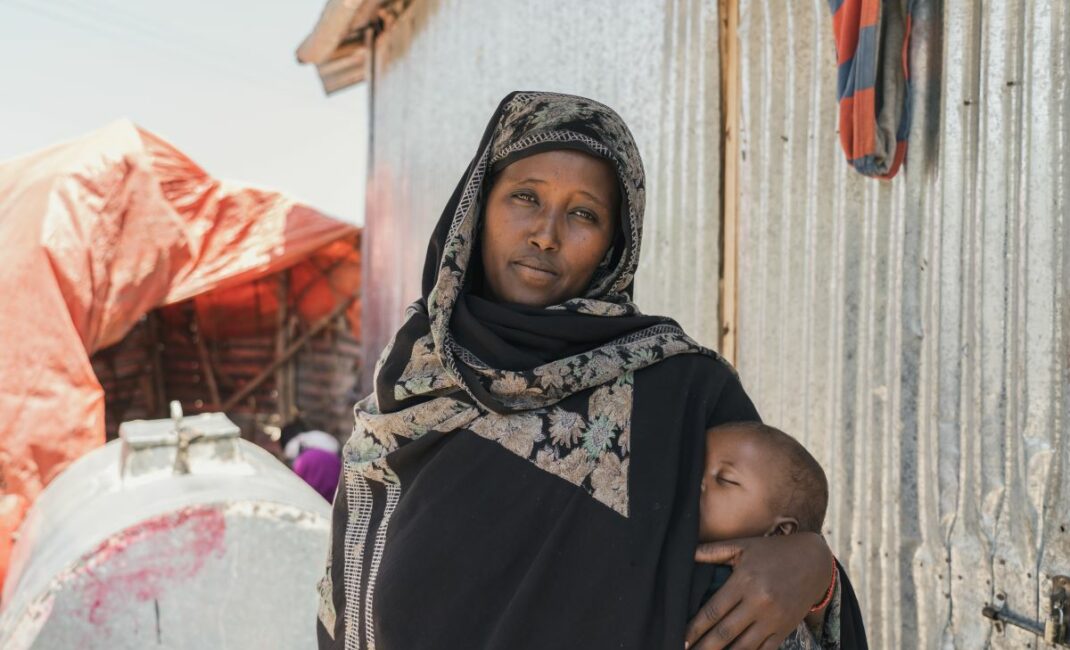
Fardowsa Muhammad with her youngest child
“My other children were also close to death,” Muhammad tells me, cradling one of her small children in her arms. “I was scared they would also die so I took them and fled here to Hargeisa.” Now, like the other IDPs and refugees here, Muhammad has been reduced to relying on charity, unsure of how to care for her six other children or where their next meal will come from.
“We have peace here in Hargeisa, but that’s all we have,” Muhammad says. “My children don’t go to school. Sometimes I can’t feed them. I can only afford to feed them white rice once in a while.
“My husband is suffering from depression. He doesn’t work anymore. Last night, he didn’t come home because he had nothing to give his children. I think the landlord here will kick us out soon because I don’t have money to pay,” she continues. “I am feeling constant uncertainty. We are just waiting on God to help us.”
Researchers say that to address the complex challenges facing IDPs and refugees who are increasingly migrating to cities and urban centers, governments and humanitarian organizations must take urgent and sustained actions to create long-term solutions for these populations.
“The scale of the problem is immense,” Holloway says, adding that there has been concern among governments and organizations that more distribution of aid in cities would create a pull factor for displaced people.
“But if we have more than half of [displaced] people living in cities anyway, then I think it’s important to meet people where they are,” she explains. “It’s not a bad thing to give aid in a city if that’s where people are already living because people should have a choice in terms of where they want to live.”
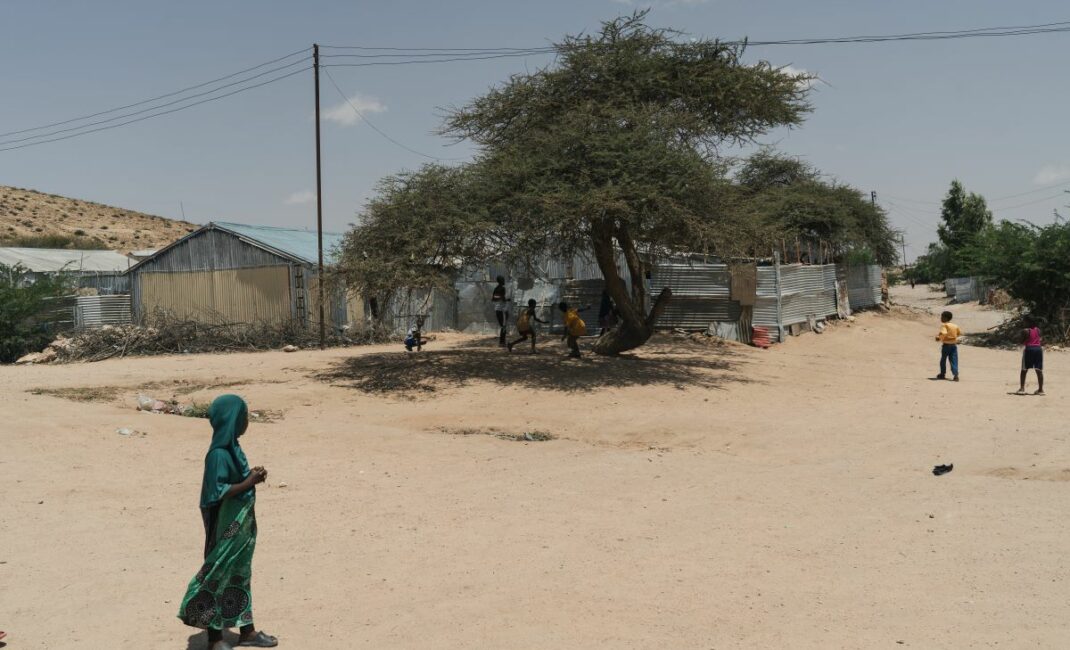
Another view of Sheikh Omar near Hargeisa, Somaliland
Edle notes that government authorities, in collaboration with the international community, must relocate displaced peoples living in cities to permanent settlements. Along with this, they should be supported in developing new livelihood strategies through capital and investments that can provide them necessary skills, Edle says.
Caitlin Sturridge, a senior research fellow for the Humanitarian Policy Group at ODI, suggests the international community needs to finance more locally-driven initiatives, particularly refugee and IDP-led organizations. This, she says, can help ensure that humanitarian aid is adequately addressing the local priorities and preferences of these displaced populations.
All of this, however, will take time – something which families in Sheikh Omar feel is quickly running out. Uncertainties and fears continue to keep them up at night.
“Back in the countryside, we used to be the donors,” Muhammad says. “Now we have become the beggars. What will happen to my children now?
“I can’t sleep because I am so scared they will grow up to become thieves because they have no animals, no property, no education, and no jobs. I am constantly worrying about what will become of them.”

A view of the outskirts of Hargeisa , Somaliland
All images by Jaclynn Ashly.
Read more:

